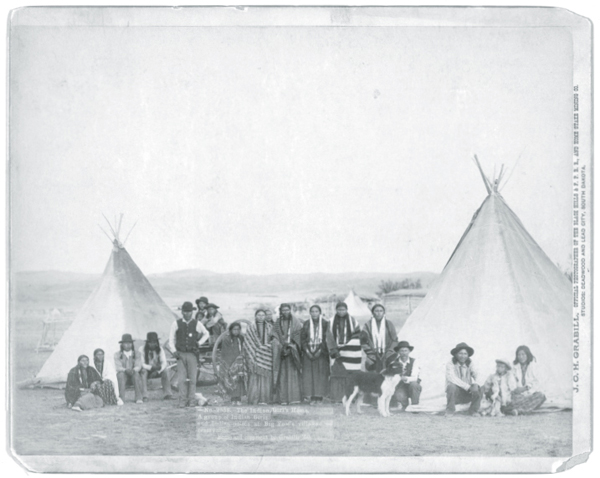


An 1890 photograph by John C. H. Grabill of a group of Minneconjou Sioux from Big Foot’s village. The Sioux man in white man’s clothing, standing fifth from the left and wearing a badge on his chest, is a Sioux reservation police officer. [LOC, DIG-ppmsc-02526]
(“Seven Council Fires”)
THE GREAT SIOUX NATION
When European settlers arrived in the New World of North and South America, they encountered a wide variety of Indian tribes that had made the land their home. Some Native American tribes were relatively small. Others had grown large enough to create a nation. Nations contained several tribes linked together through common languages, blood relations, and customs. Since Indians lived off the land, they usually separated into small bands, sub-bands, or subtribal units in order to make sure they could hunt and harvest enough food to eat. These subunits would regularly gather at sacred locations during the summer to perform religious ceremonies and discuss in council important matters affecting the nation.
These are the various groups that formed the Sioux Nation.
East
Santee (Dakota speakers)
Mdewakanton
Sisseton
Wahpekute
Wahpeton
Central
Wiciyelas(Nakota speakers)
Yankton
Yanktonais
West
Teton (Lakota speakers)
Blackfoot Sioux
Brulé
Hunkpapa
Minneconjou
Oglala
Sans Arcs
Two Kettles